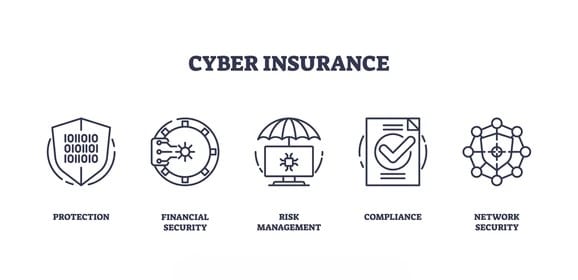The landscape of cyber insurance is rapidly evolving, driven by increasing cyber threats and the growing need for businesses to protect themselves from the financial repercussions of data breaches and cyberattacks. As we look to the future, it is essential to understand the challenges and opportunities that lie ahead in this dynamic market.
The Current State of Cyber Insurance
The global cyber insurance market is projected to grow significantly, from USD 16.66 billion in 2023 to an estimated USD 120.47 billion by 2032, reflecting a compound annual growth rate (CAGR) of 24.5% during this period. This growth is largely fueled by the rising frequency and sophistication of cyber threats, which have made it imperative for organizations to invest in robust cybersecurity measures and insurance coverage.
Challenges Facing Cyber Insurance

1. Increasing Cyber Threats
The frequency of cyberattacks, including ransomware incidents and data breaches, continues to rise. For instance, ransomware attacks have surged by over 200% year-on-year in late 2023. This escalating threat landscape complicates risk assessment for insurers, making it challenging to provide adequate coverage without incurring significant losses.
2. High Premium Costs
As the demand for cyber insurance grows, so do the premiums. Many organizations face rising costs, with some insurers increasing rates by up to 30% due to the volatile nature of claims. This can deter small and medium-sized enterprises (SMEs) from obtaining necessary coverage.
3. Lack of Standardization
The cyber insurance market lacks standard definitions and coverage options, leading to confusion among policyholders. Insurers often struggle with inconsistent underwriting practices due to the absence of historical data on cyber incidents, making accurate risk assessment difficult.
4. Regulatory Pressures
With the implementation of stricter regulations regarding data protection and privacy (such as GDPR), insurers must navigate complex compliance landscapes while designing policies that meet diverse regulatory requirements.
Opportunities in Cyber Insurance

1. Market Expansion
Despite challenges, there is significant potential for growth in the cyber insurance market, particularly among SMEs that have historically been underserved. As awareness of cyber risks increases, more businesses are likely to seek out tailored insurance solutions.
2. Technological Advancements
The integration of artificial intelligence (AI) and machine learning (ML) into underwriting processes presents a unique opportunity for insurers. These technologies can enhance risk assessment capabilities and streamline claims processing, ultimately improving efficiency and customer satisfaction.
3. Innovative Products
Insurers are developing new products that cater specifically to emerging risks such as cryptocurrency threats and business email compromise (BEC). This innovation can help address the evolving needs of businesses facing modern cyber threats.
4. Enhanced Risk Management Solutions
Insurers can offer value-added services beyond traditional coverage, such as risk management consulting and cybersecurity training for clients. By helping organizations strengthen their security posture, insurers can reduce claim frequency and severity while fostering long-term relationships with policyholders.
Also Read : Key Benefits Of Choosing Term Life Insurance
Conclusion
The future of cyber insurance holds both challenges and opportunities as businesses continue to grapple with evolving cyber threats. By embracing technological advancements and innovating their product offerings, insurers can better serve their clients while navigating the complexities of this dynamic market. As awareness grows and more organizations recognize the importance of protecting themselves against digital risks, the demand for comprehensive cyber insurance solutions will likely continue to rise.
FAQs
Q: What is cyber insurance?
A: Cyber insurance provides financial protection against losses resulting from cyber incidents such as data breaches, ransomware attacks, and other cyber threats.
Q: Why is there a growing demand for cyber insurance?
A: The increasing frequency and sophistication of cyberattacks have heightened awareness among businesses regarding the need for protection against potential financial losses.
Q: What challenges do insurers face in providing coverage?
A: Insurers struggle with rising premium costs, lack of standardization in policies, increasing claims due to sophisticated attacks, and navigating regulatory pressures.
Q: How can technology improve cyber insurance?
A: AI and ML can enhance risk assessment accuracy, streamline underwriting processes, and improve claims handling efficiency.
Q: Are small businesses eligible for cyber insurance?
A: Yes, many insurers are now targeting small and medium-sized enterprises with tailored policies designed to meet their specific needs.




